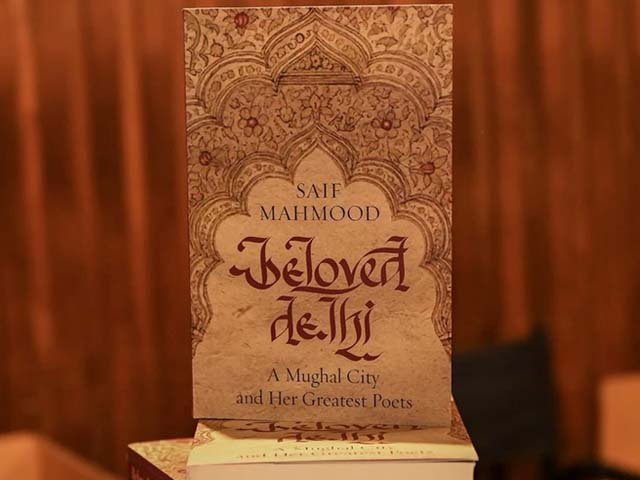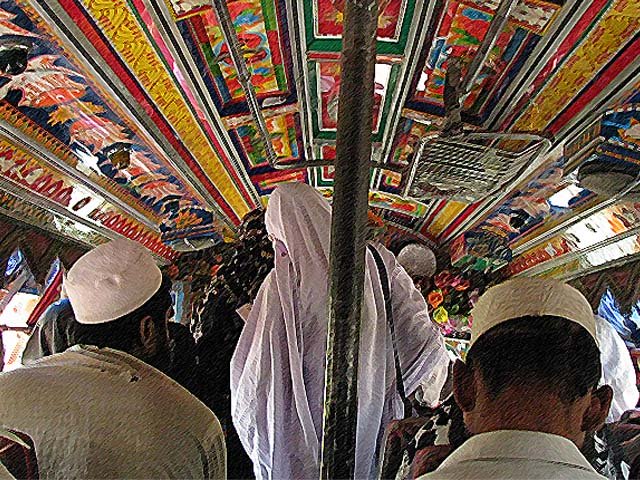
Published in late 2018, this book is an exhilarating revivification of the city of poets. PHOTO: TWITTER/ SYED MOHAMMAD QASIM
Beloved Delhi is not just a tribute to the city; it is a tribute to Urdu
We need to recognise that the efforts of all these poets ensured that Urdu as a language developed its own identity.
Tracing the literary and cultural arc of a city such as Delhi is an arduous task. The amount of revolutions and genocides it has endured are not easy to pen down. Keeping this in mind, Saif Mahmood does a remarkable job in his recent book, Beloved Delhi. Published in late 2018, this book is an exhilarating revivification of the city of poets. According to Mahmood, his stimulus for authoring this book came from the dining room conversations which used to be held at his home about Urdu poetry.
Unfortunately, these dining room conversations have now become a non-existent practice as the tradition of family congregating and engaging in discourse is diminishing rapidly.
Beloved Delhi primarily sheds light on the life and poetry of eight famous poets of Delhi, including Mirza Mohammad Rafi Sauda, Mirza Ghalib, Bahadur Shah Zafar, Shaikh Mohammad Ibrahim Zauq and Daagh Dehlvi. However, it is not merely a biography of the eight poets but a comprehensive historical account of the city once known as ‘Dilli’. The book starts in 1713, the year Sauda was born, and ends at 1905, when Dehlvi’s demise gave Urdu language the status of an orphan for the next few decades.
Contrary to popular belief, food isn’t the only attraction Delhi has to offer, and this masterpiece by Mahmood can confirm that. The fame and admiration the kabab and faluda vendors around Jamia Masjid have received may lead you to believe that food is Delhi’s sole charm, but the rich literary culture Delhi possesses is the true reflection of this city. In today’s world, where the conventional education system has significantly taken over, the habit of reading about art and culture exclusively for the sake of it and not as a means to an end has declined vastly. Nowadays, most people study to improve their socio-economic status and upgrade their living standards, unlike in the 19th century where the masses understood and studied literature as a means in itself.
The author has taken great pains to make the poetry reproduced in this book accessible for everyone. Initially, Mahmood wrote all the poetry in Urdu and then, to facilitate readers who do not understand Urdu, translated the work in English. In some places, he has also elaborated upon a particular verse of a couplet by either commenting on its background or explaining the mental or emotional state of the poet while writing that verse.
Personally, I had been struggling to find an explanation for Ghalib’s following verses,
Hota hai nihan gard mein sehra meray hote
(Next to me, the wilderness is shamed into hiding in dust)
Ghista hai jabeen khaak pe dariya meray aage
(The servile river grovels in the dust before me)
Fortunately, after reading Beloved Delhi, I understood the context of this couplet.
Additionally, the description of the lives of these poets has been done in a meticulous manner. It is clear that they lived immensely tough lives and had to struggle to make ends meet, and it has been said that Ghalib used to sell his poetry or barter it in exchange for household items. But despite these trying circumstances, they were able to motivate themselves to write breathtaking poetry.
Reading the tumultuous history of Delhi is bound to make anyone distraught. While we all lament the tyrannies of colonial rule and the bloodbath which took place in the wake of independence, most of us are unaware that Dehli was also tormented by its own people. Nadir Shah, who attacked Delhi in 1739 and killed more than 10,000 people, is just one such example discussed in this book.
Mahmood also delves into some of the personal rivalries the poets in Delhi had with one another, the rivalry between Ghalib and Zauq being particularly famous. But despite this, all of them contributed greatly towards the development of Urdu, and they would not shy away from praising each other. Ghalib, while praising Mir Taqi Mir, wrote,
Rekhta kay tum hee ustaad nahien ho Ghalib
(You are not the only master of Urdu, Ghalib)
Kehtey hein kay aglay zamanay mein koyi Mir bhee thaa
(They say there used to be a Mir in the past)
Mehmood elucidates that despite their differences, the common thread which bound these poets together was their love for Delhi. It is also interesting to note that although the power of Zafar was diminishing, he continued his patronage of the poets till the very end of his rule.
It is important for us to recognise that the efforts of all these poets ensured that Urdu as a language developed its own identity. Given that the poetry of Ghalib and Mir is quite popular, Beloved Delhi manages to bring to the fore the works of other famous poets who perhaps aren’t read as regularly as they should be.
The Delhi of today is considerably different from the Delhi of the Mughal era, but it is reassuring to know that Urdu is not only surviving there but also enjoys the status of being the second most popular language in the city. The exceptional flair for writing that Mahmood possesses has the potential to convince anyone to visit Delhi at least once in their lifetime. Let us hope we can inculcate reading habits in our youth and encourage them to engage in books such as these.




COMMENTS
Comments are moderated and generally will be posted if they are on-topic and not abusive.
For more information, please see our Comments FAQ